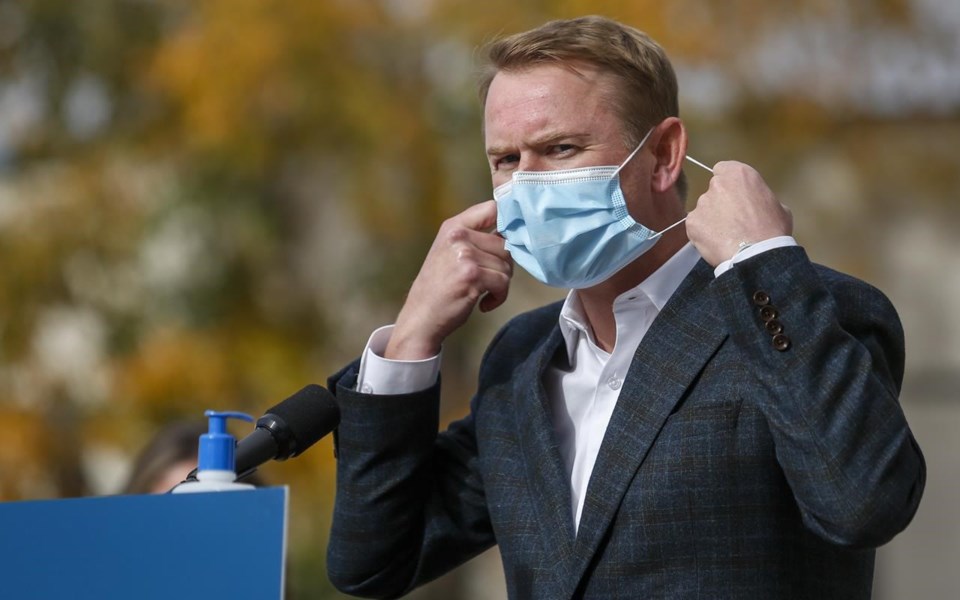EDMONTON — A new field hospital being set up on Edmonton's University of Alberta campus will be operational by January, but Health Minister Tyler Shandro says it remains a last-ditch contingency.
Shandro says the temporary 100-bed facility would only be necessary if current hospital limits, including creating up to 2,250 beds provincewide for COVID-19 patients, are reached.
“This is a contingency plan,” Shandro told reporters Thursday at a virtual news conference where he announced the expansion of rapid COVID-19 testing.
“This is not part of the current forecast, the current plan.”
He said the decision to use the field hospital is up to Alberta Health Services, the arm of the government tasked with delivering front-line care.
The site is being created with help from the Canadian Red Cross and is being set up inside the Universiade Pavilion. The cavernous, multi-purpose sports facility, just south of the downtown, is better known as the Butterdome given its rectangular shape and yellow exterior.
If necessary, the field hospital is to be used for non-critical patients and patients who are recovering from COVID-19 but are at low risk of transmitting the novel coronavirus.
Alberta already has a field hospital up and running outside the Peter Lougheed Centre in Calgary. It's currently being used to allow for extra physical distancing for treatment of emergency care patients.
The province has been dealing with high caseloads of new COVID-19 patients, with new daily case counts over 1,000 for a month. As of Wednesday, there were more than 20,000 active cases with 749 people in hospital, 139 of them in intensive care.
Edmonton and the surrounding area have been particularly hard hit. And to preserve emergency response in the region, about 60 per cent of non-urgent surgeries — those that require a hospital stay — are on hold. Diagnostic imaging and other clinical support services are being cut by up to 40 per cent.
Overall, the health system is adding new intensive care beds and freeing up others by moving non-critical patients to beds in continuing-care centres.
Even with these changes, vaccinations that started earlier this week and new rules to close down community and public spaces and sharply curtail retail activity, Shandro said hospitals can expect the tough slog to continue through the end of the year.
“The toughest weeks for our hospitals and our health-care providers are still ahead of us,” said Shandro.
“There are too many very sick people in our hospitals and the numbers are going to keep going up for at least another couple of weeks because of the high numbers of new infections.
“It’s going to be a tough Christmas.”
To reduce the spread, the government has also been rolling out rapid testing to supplement conventional tests for COVID-19.
About 1,000 people have already received the rapid tests, with 76 testing positive.
Shandro said the rapid testing program will be expanded to high-risk long-term care homes and designated supported living facilities, first in Edmonton, then Calgary and later to points outside the two cities.
The rapid test is not as sensitive as the conventional one, but results can be determined within minutes rather than hours or days, allowing patients to be isolated faster and reducing the chances of spread to others.
“We can notify health-care teams sooner to prioritize those who are still infectious, and it will also free up capacity and reduce turnaround times for the (conventional) tests,” said Shandro.
Alberta has received more than 800,000 rapid tests from the Public Health Agency of Canada.
The province is expecting new shipments of vaccines in the coming weeks and the plan is to have everyone vaccinated by next fall.
This report by The Canadian Press was first published Dec. 17, 2020.
The Canadian Press



